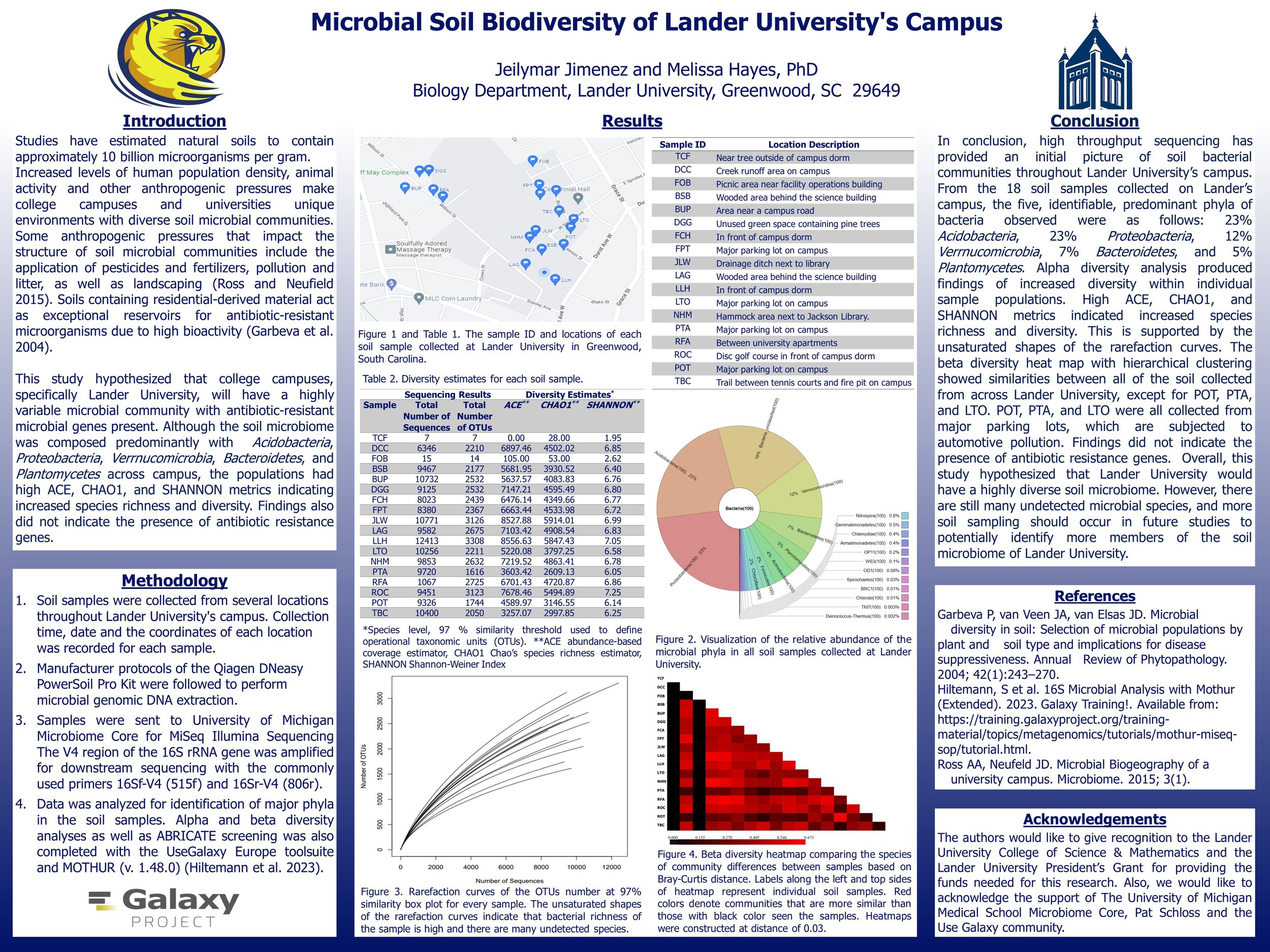Microbial Soil Biodiversity of Lander University's Campus
Jeilymar Jimenez
University campuses represent a unique environment with a wide range of microorganisms due to high human population densities and increased animal activity. After a brief literature review, it was noted that very little research has been published on the diversity and bioactivity of soil microbial communities on college campuses. Soil samples were collected throughout the college campus using convenience sampling and each soil sample was analyzed independently for microbial community analyses. DNA was extracted from each soil sample using Quiagen DNeasy PowerSoil Pro Kit following the standard manufacturer's protocol. Concentrations of extracted DNA were assessed using a Nanodrop spectrophotometer to ensure successful DNA extraction and quantification for sequence library preparation. DNA samples were sent to University of Michigan’s Microbiome Core for library preparation and next generation sequencing. The V4 region of the 16S rRNA gene was amplified for downstream sequencing with the commonly used primers 16Sf-V4 (515f) and 16Sr-V4 (806r) and a previously developed protocol. Sequencing was accomplished via a MiSeq high-throughput sequencer. Acquired DNA sequences were filtered for quality and analyzed using MOTHUR 1.48.0 following the MiSeq SOP with modifications. Results were analyzed to determine the composition and structure of the Lander University soil microbiome. Additionally, species diversity was determined to better understand the ecological complexity of a single sample (alpha diversity) or between samples (beta diversity). Also, results were analyzed for the presence of antibiotic producing and antibiotic resistant organisms. This study has provided an initial characterization of the soil microbial communities collected on the Lander University college campus in Greenwood, South Carolina.
Jeilymar Jimenez is a senior biology major minoring in chemistry. In addition to being a tutor in the Academic Success Center, Jeilymar is also the vice president of the pre-health club and environmental science student organization.
